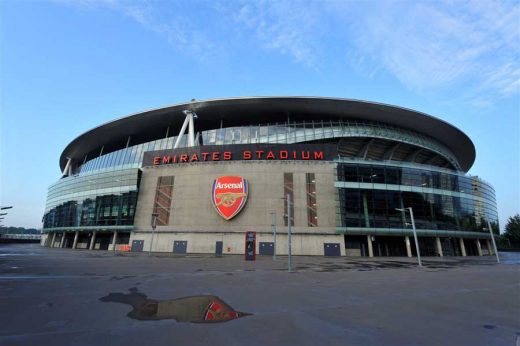The iconic history of championship belts, Stadiums Buildings, Arena Architecture Structures
The Iconic History of Championship Belts
21 November 2022
Championship belts have been a cornerstone of professional wrestling for over a century, serving as symbols of excellence and achievement in the world of sports entertainment.
These beautifully crafted pieces of metal and leather are not just accessories; they embody the blood, sweat, and tears that athletes have poured into their craft. We will delve into the fascinating history of championship belts, exploring their evolution, significance, and some of the most iconic designs in the world of winged eagle belt.
The Birth of Championship Belts:
The origins of championship belts can be traced back to the early days of professional wrestling in the late 19th century. While the precise details are somewhat murky, it is believed that early wrestling champions received simple leather straps as symbols of their supremacy. As the sport evolved and professional wrestling gained popularity, these belts became more elaborate and ornate.
One of the earliest recognizable championship belts was the American Heavyweight Championship belt, which was introduced in the 1920s. This belt featured intricate designs, including a globe in the center and the names of past champions engraved on plates. It set the stage for the future of championship belts in professional wrestling.
The Golden Age of Championship Belts:
The marked a golden age for professional wrestling, and the champion belt played a pivotal role in the industry’s success. The World Wrestling Federation (WWF, now WWE) and other wrestling promotions around the world introduced iconic championship belts during this period.
One of the most famous championship belts from this era is the WWF Winged Eagle Championship, which was introduced in 1988. With its bold design, the Winged Eagle belt became an iconic symbol of the WWF during the height. The belt featured a large eagle in the center, with intricate details and gold plating, and it became a cherished item for wrestling fans.
Evolution and Unification:
The early saw the unification of various championship titles in WWE, resulting in the creation of the WWE Undisputed Championship. This belt combined the WWF and WCW World Heavyweight Championships, featuring a large circular center plate with the WWE logo prominently displayed. The belt’s design was more streamlined, reflecting the changing times in professional wrestling.
The Ruthless Aggression
The featured a wide range of championship belt designs. This unique and polarizing design added an element of pop culture to the wrestling world.
Meanwhile, the Intercontinental Championship underwent several redesigns, with the oval-shaped center plate becoming a defining feature. The Intercontinental Championship has a rich history, with legendary champions like Chris Jericho and The Miz proudly holding it.
The Modern Brand Split:
In the modern era, championship belt a brand split, with separate rosters for Raw and SmackDown. This division led to the introduction of brand-specific championships and unique belt designs. The Universal Championship, for instance, was introduced to represent the top champion on the Raw brand, featuring a red strap and a globe-themed center plate.
The SmackDown brand introduced the WWE SmackDown Women’s Championship, featuring a blue strap and an eye-catching design. The Women’s Evolution in WWE led to the creation of new women’s championships and more opportunities for female superstars to shine.
Throughout the years, wrestling promotions have also paid tribute to their rich history by reintroducing classic championship belt designs. The WWE has brought back the “Big Gold Belt,” reminiscent of the WCW World Heavyweight Championship, and the “Winged Eagle” WWE Championship for special occasions, invoking a sense of nostalgia for long-time fans.
These classic designs evoke memories of legendary battles and iconic moments in wrestling history, underscoring the enduring significance of championship belts in the world of sports entertainment.
Beyond WWE:
While WWE has been at the forefront of professional wrestling, other promotions around the world have their own unique championship belts. New Japan Pro Wrestling (NJPW) features the prestigious IWGP Heavyweight Championship, known for its intricate and beautifully designed plates. All Elite Wrestling (AEW) introduced the wwe championship belts, featuring an eye-catching gold and silver design.
These belts represent the global nature of professional wrestling and the diverse range of designs that cater to the tastes of fans worldwide.
Conclusion:
Championship belts have come a long way from their humble beginnings in the early days of professional wrestling. They have evolved into works of art, symbolizing the pinnacle of achievement in the industry. Whether they harken back to the golden age of wrestling or represent the innovation of the modern era, championship belts are an integral part of the sport’s rich history.
These iconic symbols are more than just accessories; they are woven into the fabric of wrestling’s identity. Championship belts serve as a visual testament to the athletes who have dedicated their lives to entertaining millions of fans and continue to captivate audiences around the world.
Comments on this guide to The Iconic History of Championship Belts article are welcome.
Football Stadiums
Football Stadium Buildings – Selection:
New Chelsea Football Stadium
Architect: Herzog & de Meuron

image from architect firm
Emirates Stadium, London
Design: HOK Sport Architecture

photo © Nick Weall
Wembley Stadium, London
Design: Foster + Partners / HOK Sport

photo © Nick Weall
Sports Grounds
Football Stadium Buildings – Selection:
Stamford Bridge Chelsea Ground
Sports Venue Building Designs
Comments / photos for the The Iconic History of Championship Belts page welcome

